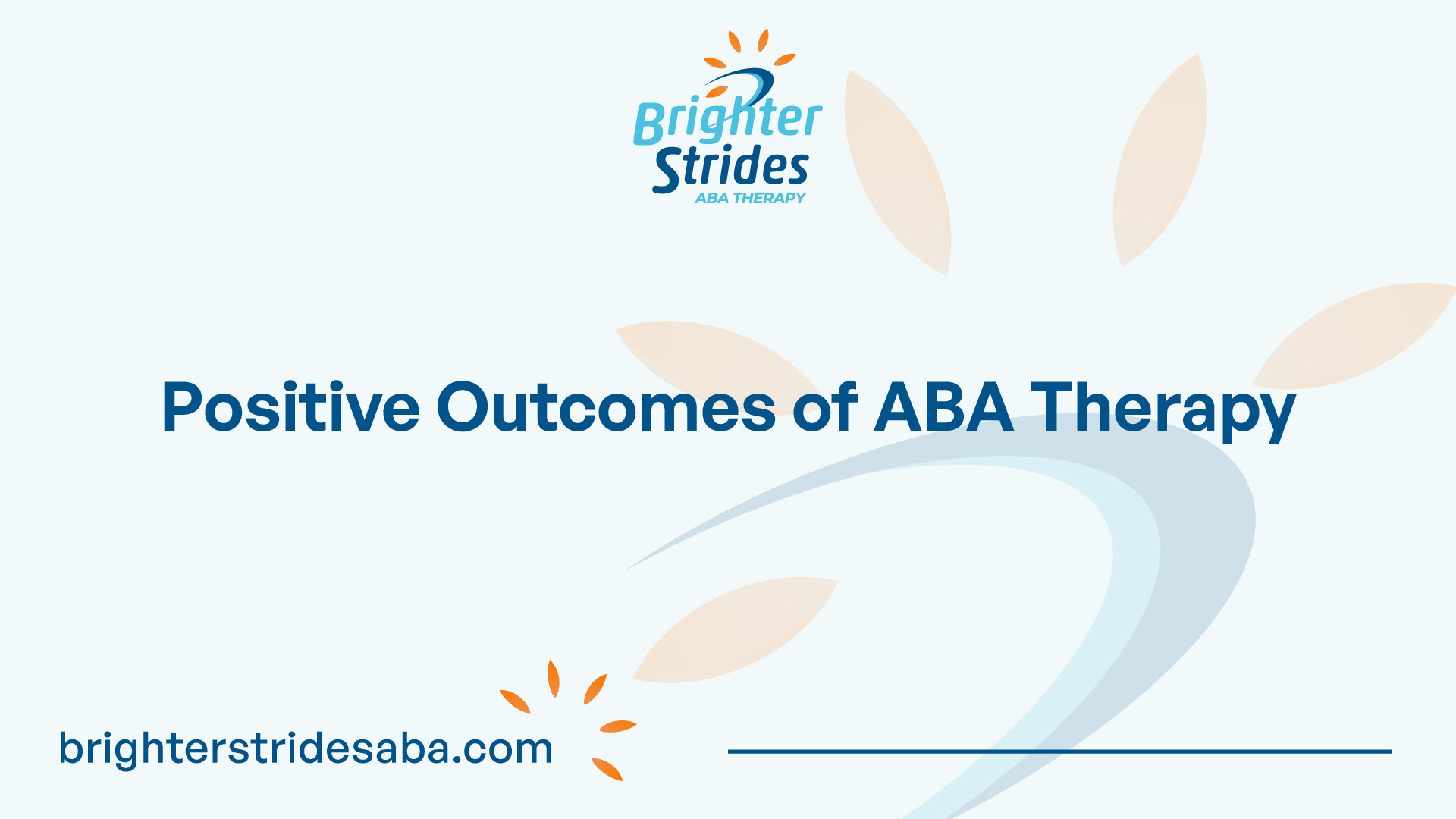
Understanding ABA Therapy Impact
ABA therapy has a significant impact on individuals with various developmental challenges, including those on the autism spectrum. Understanding this impact involves tracking progress and measuring success in short-term objectives.
Tracking Progress in ABA Therapy
Progress in ABA therapy is tracked and measured using objective data to assess the effectiveness of the interventions. This is achieved through various methods, including baseline assessment, data collection during therapy sessions, graphing progress over time, and providing progress reports to parents on a regular basis. These techniques allow clinicians and parents to monitor the individual’s development and make informed decisions regarding the therapy plan.
By tracking progress, ABA therapists can evaluate the effectiveness of specific interventions and make data-driven adjustments to the treatment plan. This ensures that therapy is tailored to the individual’s needs and helps maximize their progress.
Measuring Success in Short-Term Objectives
Measuring success in ABA therapy involves setting specific short-term objectives that are achievable within a defined timeframe. These objectives focus on developing specific skills and behaviors that are necessary for the individual’s overall progress.
The mastery of short-term objectives is crucial for achieving long-term goals. It allows individuals to build a foundation of skills that can be generalized and applied in various environments. For example, short-term objectives may include tasks such as identifying colors, engaging in conversations, or following instructions. As individuals master these objectives, they are better equipped to achieve long-term goals, such as holding conversations with peers independently or completing tasks with minimal support [2].
Regularly measuring a child’s progress through goal attainment provides valuable information to clinicians and parents. It helps them understand how well the child is utilizing the skills learned in ABA therapy and guides decision-making for future interventions. One common tool used in measuring progress is the Vineland Adaptive Behavior Scales, a norm-referenced assessment that tracks how children demonstrate the skills they learn in therapy in their day-to-day lives. This assessment provides valuable insights into the effectiveness of therapy in changing a child’s developmental trajectory.
By tracking progress and measuring success in short-term objectives, ABA therapy can be customized to meet the unique needs of each individual. This data-driven approach allows therapists to continuously evaluate and refine the therapy plan, ensuring optimal progress and outcomes.
Assessing Long-Term Goals
When it comes to ABA therapy, assessing long-term goals is an essential part of the process. One commonly used tool for measuring progress in ABA therapy is the Vineland Adaptive Behavior Scales. This norm-referenced assessment helps clinicians and parents track how children demonstrate the skills they learn in therapy in their day-to-day lives, enabling them to understand the effectiveness of therapy in changing a child’s developmental trajectory [2].
Utilizing the Vineland Adaptive Behavior Scales
The Vineland Adaptive Behavior Scales assess various areas of functioning, including communication, daily living skills, socialization, and motor skills. By evaluating a child’s performance in these domains, clinicians can gain valuable insights into their overall adaptive behavior and measure their progress over time.
The assessment is typically conducted through interviews with parents, caregivers, and other individuals involved in the child’s life. They are asked about the child’s abilities and behaviors in different situations, allowing for a comprehensive evaluation of their adaptive functioning.
Interpreting Vineland Scores
Interpreting Vineland scores involves comparing a child’s performance to the scores of typically developing individuals of the same age. The assessment provides standard scores, percentile ranks, and age equivalents for each domain, allowing clinicians to assess how a child’s functioning compares to their peers.
In the context of ABA therapy, an increase in Vineland scores, particularly in areas such as communication or the Adaptive Behavior Composite, indicates that therapy is effectively changing the child’s developmental trajectory. It demonstrates that the child is utilizing the skills they have learned in therapy and applying them in their day-to-day life.
Regularly measuring a child’s progress through goal attainment and Vineland achievement scores provides clinicians and parents with crucial information over time. It helps them understand how children are utilizing the skills learned in ABA therapy and provides insights on how to best support their continued growth and development.
It’s important to note that while ABA therapy has shown positive outcomes for many individuals, some individuals have reported negative experiences. It is crucial to consider individual needs and preferences, as well as seek guidance from experienced professionals, when determining the appropriateness and effectiveness of ABA therapy for an individual’s specific circumstances. For further information on ABA therapy and related topics, please refer to our aba therapy online resources.

Positive Outcomes of ABA Therapy
ABA therapy, or Applied Behavior Analysis therapy, has demonstrated significant positive impacts on individuals receiving treatment. Let’s explore two key positive outcomes associated with ABA therapy: its effectiveness in changing developmental trajectory and the importance of regular progress measurement.
Effectiveness in Changing Developmental Trajectory
One of the notable benefits of ABA therapy is its effectiveness in changing the developmental trajectory of individuals receiving treatment. Children who engage in ABA therapy often show progress in various areas, such as communication, social skills, and adaptive behaviors. Tracking progress through short-term objectives and achieving long-term goals is a crucial part of ABA therapy.
Research suggests that children with autism who participate in ABA therapy tend to exhibit an increase in Vineland scores over time. Vineland scores measure adaptive behaviors and are used to assess an individual’s overall functioning and development. A rise in Vineland scores, particularly in areas related to communication or the Adaptive Behavior Composite, indicates that ABA therapy is effectively changing the child’s developmental trajectory [2].
It is important to note that each individual’s response to ABA therapy may vary. A personalized approach that considers the unique needs and goals of the individual is crucial for maximizing the effectiveness of the therapy. Collaborative efforts between clinicians, parents, and caregivers play a significant role in tailoring ABA therapy to meet the specific needs of each individual.
Importance of Regular Progress Measurement
Regularly measuring a child’s progress is an integral part of ABA therapy. Tracking progress through goal attainment and Vineland achievement scores provides clinicians and parents with valuable information over time. This enables them to assess how well children are utilizing the skills learned in ABA therapy and make informed decisions about future interventions and support [2].
By mastering short-term objectives, such as identifying colors or engaging in conversations, children work towards achieving long-term goals. The mastery of these short-term objectives demonstrates progress and contributes to the overall success of the therapy. Measuring progress through short-term objectives helps clinicians and parents understand the specific areas where the child is improving and where further support may be needed [2].
Vineland Adaptive Behavior Scales are frequently used to assess an individual’s adaptive behaviors and functioning. Regularly evaluating Vineland scores provides clinicians and parents with crucial information about the child’s development and progress. Increases in Vineland scores, especially in areas such as communication or the Adaptive Behavior Composite, indicate positive developmental changes achieved through ABA therapy [2].
By consistently measuring progress and monitoring the effectiveness of ABA therapy, clinicians and parents can make informed decisions about the ongoing treatment plan and ensure that the therapy continues to address the specific needs of individuals receiving treatment.
While ABA therapy has shown positive outcomes for many individuals, it is important to acknowledge that experiences and perspectives may vary. It is essential to consider a range of viewpoints when evaluating the impact of ABA therapy and to ensure that therapy approaches are tailored to the individual’s unique needs and preferences.
ABA Therapy for Autism Spectrum Disorder
ABA therapy has proven to be highly effective in addressing the unique challenges faced by individuals with Autism Spectrum Disorder (ASD). Two key areas in which ABA therapy makes a significant impact are in addressing challenges in communication and enhancing social skills.
Addressing Challenges in Communication
Children with ASD often face difficulties in communication, ranging from delayed speech development to challenges in social communication. ABA therapy targets these challenges by using evidence-based techniques to improve communication skills.
Through ABA therapy, individuals with ASD learn to express themselves effectively, understand and interpret nonverbal cues, and engage in meaningful conversations. Therapists work closely with individuals to develop language skills, including vocabulary expansion, sentence formation, and pragmatic language use.
The goal of addressing communication challenges in ABA therapy is to help individuals with ASD develop functional communication skills that enable them to express their needs, wants, and emotions effectively. By focusing on communication, ABA therapy provides individuals with the tools to navigate social interactions and build meaningful relationships.
Enhancing Social Skills
Another crucial aspect of ABA therapy for individuals with ASD is the enhancement of social skills. Social deficits are a common characteristic of ASD, making it challenging for individuals to interact and engage with others effectively.
ABA therapy utilizes evidence-based techniques to teach social skills, such as turn-taking, sharing, perspective-taking, and appropriate social behavior. Therapists create structured environments and use positive reinforcement methods to encourage and reinforce desired social behaviors.
By targeting social skills, ABA therapy helps individuals with ASD develop the necessary skills to navigate social situations, form friendships, and engage in social activities. The therapy focuses on building social competence and fostering a sense of belonging within various social settings.
Overall, ABA therapy plays a vital role in addressing the challenges faced by individuals with ASD in communication and social interaction. By targeting these areas, ABA therapy empowers individuals with ASD to develop the skills they need to effectively communicate, form connections, and thrive in their social environments.
For more information on ABA therapy and its impact, you can explore our articles on aba therapy workshops, aba clinical guidelines, and aba therapy certification requirements. Additionally, there are various aba therapy online resources available to support individuals and families seeking more information on ABA therapy and its benefits for individuals with ASD.

Techniques in ABA Therapy
ABA therapy utilizes various techniques to promote positive behavior and skill development in individuals. Two commonly used techniques in ABA therapy are positive reinforcement methods and the discrete trial training approach.
Positive Reinforcement Methods
Positive reinforcement is a fundamental technique used in ABA therapy to encourage desired behavior. It involves providing a reward or praise immediately after the individual demonstrates the desired behavior, which helps reinforce and increase the likelihood of that behavior recurring in the future [4]. The reward can be anything meaningful to the individual, such as a small toy, verbal praise, or a favorite activity.
The key to effective positive reinforcement is ensuring that the reward is delivered promptly and consistently after the desired behavior occurs. This association between the behavior and the positive reinforcement helps individuals understand the connection and motivates them to engage in the desired behavior again. Over time, as the behavior becomes more established, the use of rewards can be gradually faded out, and the individual learns to continue the behavior without the need for external reinforcement [5].
Discrete Trial Training Approach
The discrete trial training (DTT) approach is a structured teaching method used in ABA therapy to break down complex skills into smaller, more manageable components. It involves presenting a specific instruction or question to the individual, allowing them to respond, and then providing immediate feedback and reinforcement based on their response.
DTT consists of three main components: the antecedent, the behavior, and the consequence. The antecedent refers to the instruction or question given to the individual. The behavior is the individual’s response to the antecedent. The consequence involves providing feedback and reinforcement based on the accuracy of the response.
This approach allows for repeated practice and reinforcement of specific skills, helping individuals learn and generalize those skills across different settings. By breaking down complex tasks into smaller, manageable steps, DTT enables individuals to acquire new skills and build upon their existing abilities.
Both positive reinforcement methods and the discrete trial training approach are evidence-based techniques used in ABA therapy to promote skill development and positive behavior. These techniques can be tailored to meet the individual needs of each person receiving ABA therapy, ensuring personalized and effective treatment plans [4].
Tailoring ABA Therapy Goals
When it comes to ABA therapy, individualized treatment plans are at the core of its effectiveness. Collaborative caregiver relationships play a vital role in tailoring ABA therapy goals to meet the unique needs of each individual.
Individualized Treatment Plans
In ABA therapy, treatment plans are designed to address the specific needs and challenges of individuals with autism spectrum disorder (ASD). These plans are developed collaboratively between caregivers and Board Certified Behavior Analysts (BCBAs) to ensure that the goals are meaningful and achievable. By actively involving caregivers in the goal-setting process, the treatment plan becomes more comprehensive and tailored to the child’s specific circumstances.
Individualized treatment plans in ABA therapy focus on measurable and achievable targets. These targets are transformed into concrete steps that contribute to larger objectives. By breaking down the goals into manageable tasks, progress can be tracked effectively, and adjustments can be made as needed.
Collaborative caregiver involvement is crucial in providing the BCBA with valuable insights into the child’s daily routines, preferences, and challenges. By sharing this information, caregivers help shape the treatment plan to reflect the child’s unique circumstances, creating a personalized approach that maximizes the effectiveness of ABA therapy.
Collaborative Caregiver Relationships
Collaboration between caregivers and the BCBA is essential for the success of ABA therapy. By working together, a strong partnership can be built, ensuring that the child receives consistent support and reinforcement across different environments.
Caregivers play a vital role in implementing the strategies and techniques learned during ABA therapy sessions. The BCBA can provide guidance and training to caregivers, empowering them to reinforce positive behaviors and implement interventions consistently. This collaboration allows for a seamless transition between therapy sessions and daily life, increasing the generalization of skills learned through ABA therapy.
Regular communication between caregivers and the BCBA is also important. This ongoing dialogue allows for progress updates, sharing of observations, and adjustments to the treatment plan as needed. By maintaining open lines of communication, caregivers can provide valuable feedback and contribute to the continuous improvement of the treatment approach.
By tailoring ABA therapy goals to the unique needs of the individual and fostering collaborative caregiver relationships, the impact of ABA therapy can be maximized. This individualized approach ensures that treatment plans are comprehensive, meaningful, and effective in addressing the specific challenges faced by individuals with autism spectrum disorder. Through the joint efforts and dedication of caregivers and professionals, ABA therapy can help individuals with ASD make significant progress in their development and overall quality of life [8].
References
- https://www.thesunshine.academy/progresstracking
- https://kyocare.com/measuring-applied -behavior-analysis-therapy/
- https://hiddentalentsaba.com/aba-therapy-techniques/
- https://www.lumierechild.com/blog/what-skills-can-your-child-learn-in-aba-therapy/
- https://dreambigchildren.com/understanding-aba-techniques-7-strategies-you-need-to-know/





